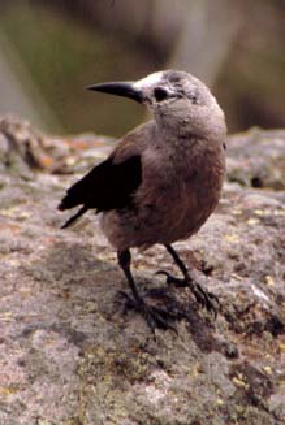Travel Reference
In-Depth Information
Clark's nutcracker
In the case of the
gray jay
(Perisoreus canadensis)
and the
Clark's nutcracker
(Nucifraga
columbiana),
it's the birds that are in for a treat. Whenever you sit down for a picnic, your
meal will be of interest to one of these camp robbers.
he
mountain chickadee
(Parus gambeli)
is heard more often than seen. It's a tiny, roly-
poly, light-gray bird with a black head and white line over the eye. Its most common song goes
fee-bee-bee,
with the first note higher than the others; sometimes it will vary this and surprise
you. he
black-capped chickadee
(Parus atricapillus)
is also found here.
The male
mountain bluebird
(Sialia currucoidus)
flashes by you wearing the most intense
shade of sky blue imaginable, while his mate makes do with a bit of blue on her otherwise
brown body. Bluebirds, a little smaller than robins, build their nests in snags.
A colony of
cliff swallows
(Hirundo pyrrhonota)
once made their distinctive jug-shaped
mud-and-stick nests under the eaves of the former Old Faithful Visitor Center. This small,
square-tailed, buff-rumped swallow also nests on the back side of Soda Butte on the Northeast
Entrance Road. Swallows live on insects they catch on the wing.
Common ravens
(Corvus corax),
purplish black, large relatives of the very common crow,
show up in droves to feast on carrion. They can be over 2 feet (60 cm) long and have a large
beak and an annoying croak. They're very intelligent birds that can mimic human speech and
learn amazingly complex behaviors, such as opening the zippers on a backpack.

